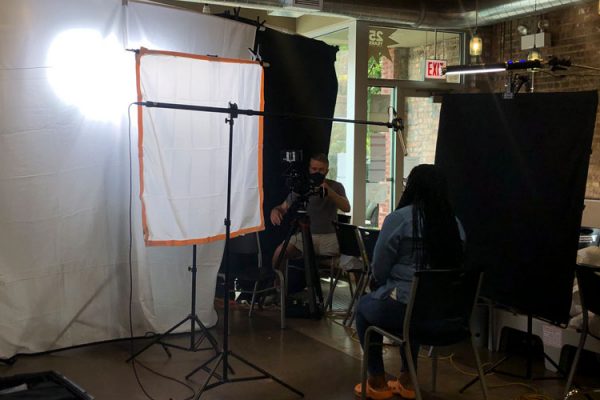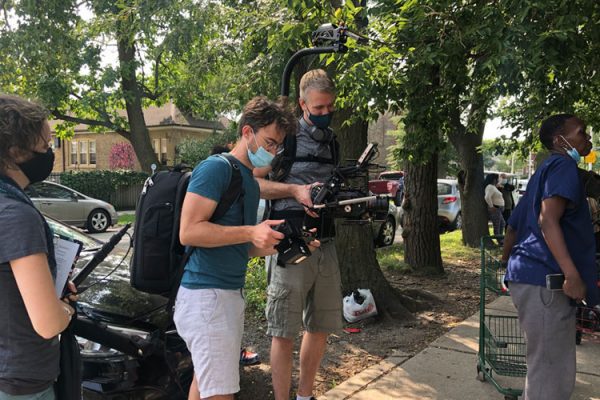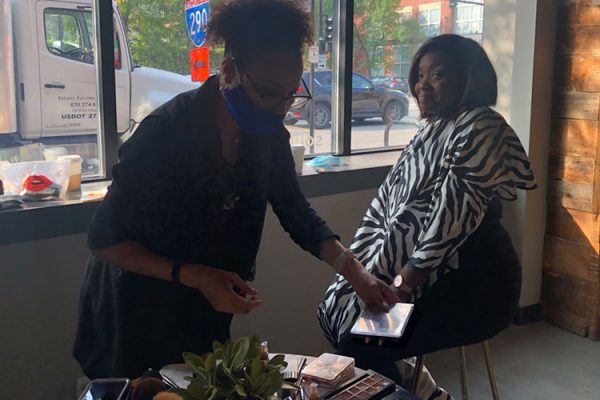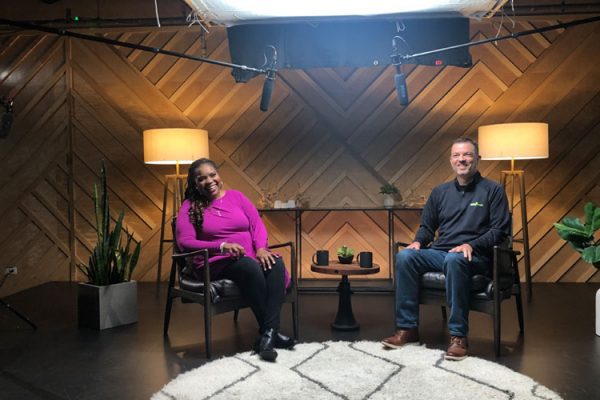5 key learnings to make your nonprofit’s virtual fundraising event a success.
The COVID-19 pandemic has forced nonprofits to move their fundraising events online. But what makes a successful virtual event? How do you keep viewers engaged? How do you grow your audience and compel them to donate?
We’ve produced numerous virtual events during the pandemic, and we’ve identified 5 Key Takeaways that will help you raise more money for your nonprofit. View our case study video (↓) to learn how.
Key Takeaways
If you don’t have time to watch the whole video, here are the key takeaways.
- Don’t make a gala, make a TV show – Your event shouldn’t feel like a Zoom call. Use professional lighting and audio to create something special, and use a variety of segments to keep viewers engaged. Opt to record the entire event ahead of time to eliminate livestreaming issues.
- Don’t put all your fundraising eggs in one basket – Present multiple opportunities to donate during the event so that all viewers hear a call-to-action.
- Maximize your investment – Create numerous stand alone videos from your event to use in marketing and fundraising campaigns for years to come.
- Reimagine promotion – Expand your invite list to include donors at all levels and new audiences around the world. Create video teasers to promote your event on social media.
- Make it emotional – Choose to tell stories that are intensely emotional so they’ll compel viewers no matter where they’re watching. Connect in real time via social media during the event to foster a sense of community.
Transcript
Johanna:
Remember when nonprofits could raise money like this? And gather their supporters like this? And celebrate with each other, like this? Well, a lot has changed this year about how nonprofits connect with their supporters, and most of it is happening online through video. We are Tectonic, a video strategy and production company for nonprofits, and we feel your pain.
Most nonprofits rely on their annual galas to raise support. So given this new reality, how do you raise the money that you need? Well, we think it’s possible to have a virtual gala that is actually pretty magical and connects you with donors and helps you raise support. We just finished a virtual gala with a nonprofit in our own backyard, here in Chicago, who relies every year on their fall gala, Breakthrough Urban Ministries.
Wilonda:
Hello everybody. My name is Wilonda Cannon and I’d like to officially welcome you to Breakthrough’s 2020 Virtual Annual Benefit.
Joel:
Hey Wilonda. Hey Alex.
Alex:
Hey everyone.
Joel:
Right from the very beginning, this project was a real partnership between Tectonic and Breakthrough. We know you had a lot of conversations with your community members and with your staff about what should this virtual gala be structured like? And what are the stories that we need to tell? And you brought a ton of great ideas and energy to this project. And so now that it’s happened, how did it go?
Alex:
So typically, the Breakthrough Benefit reaches 1,200 people. This year, we had 3,920 combined views. We also had nearly 12,000 different points of contact with people on social media. We saw probably 10 times the web traffic on our website. We were receiving comments from people across the country and around the world who were able to tune in. People were like, “I can’t believe that you all made something that looks like that.” People were really, really impressed.
Wilonda:
I would agree.
Johanna:
So if you’re planning a virtual gala yourself, here are five key takeaways we learned from this project to help make your virtual gala a success.
Key takeaway number one: don’t make a virtual gala, make it feel like a TV show. If you try to recreate the magic of your in-person event online, it’s going to flop.
Joel:
Breakthrough wanted to create an experience that felt like a TV show. So, basically, we created a TV set. So we had professional cameras, audio, lighting, hair and makeup. We did some filming on location to take people to where the real work happens on the ground. And all of these little details make the event feel special and not like just this, like another Zoom call.
Johanna:
Yeah, it definitely shouldn’t feel like this.
Breakthrough sectioned off the content into different groups and kind of changed the style. So it ended up feeling like you were kind of changing the channel every couple of minutes, which helped keep the pace up and keep it interesting. And in those different styles, they tried to encapsulate as much content as possible into storytelling and conversation, rather than relying on a lot of direct address.
Joel:
We also prerecorded Breakthrough’s entire gala. So there was nothing left to chance.
Johanna:
Key takeaway number two, don’t put all your fundraising eggs in one basket. Expect that people are not going to watch your entire virtual gala and make multiple asks for donations throughout the event.
Joel:
Breakthrough created two simple commercial breaks throughout the gala that gave people the opportunity to donate and didn’t rely just on the big ask at the end.
Johanna:
Key takeaway number three, maximize your investment. Maximize your investment by creating video assets that will continue to serve your organization long after your event has passed.
Joel:
Besides making the video of the event available online afterwards, we also created stories and conversations and talks from the event as separate elements that they can now leverage for years to come in their fundraising and their marketing.
Johanna:
Key takeaway number four, re-imagine promotion, re-imagine your invite list and the promotion of your event. Nonprofits can expand their invite list to donors at any level, anywhere in the world, even after the event has already streamed.
Joel:
This is a huge opportunity with online galas because with the increased audience potential, there’s increased interest from corporate sponsors. Breakthrough experienced this and their corporate sponsorship was the highest it’s ever been this year.
Johanna:
It’s also a good idea to create some trailers to promote the event so that people know this is something that they don’t want to miss.
Johanna:
Key takeaway number five, don’t forget to make your event as emotional as possible. One thing that in-person event has a virtual event doesn’t is that there’s something inherently emotional about being in the same space as a large group of people and experiencing something together in the moment. And so, one thing Breakthrough did really well is they used social media to engage the community together, to post pictures of their watch parties and to set up Zoom hangouts afterwards, to keep the conversation going so that people really felt like they were a part of the organization.
Joel:
We spent a lot of time really diving into the stories that they wanted to tell, getting to know our story subjects, spending time on the ground, where the work was actually happening, making sure that those stories really hit on the emotion that they needed to.
Going into the online event, there was a lot of unknowns, there was a lot of question marks, maybe some concerns. How do you feel about it now?
Alex:
The resounding answer has been, yes, it’s worth it, but find someone who can walk you through the process, if it’s new to you.
Wilonda:
I think, because of our experience with Tectonic, it has really changed the way I think the organization would consider events in the future.
Joel:
Well we loved this project and we loved collaborating with you and your team and the whole East Garfield Park community on this project. So thank you so much.
Johanna:
So we hope the biggest thing that you take away from this is that, while a virtual gala may not be what you planned and it might be kind of scary. It can be a really effective way to grow your audience and get the support you need to keep doing your work. So we hope you feel empowered and you learned some things and you can go make a virtual gala that rocks.







